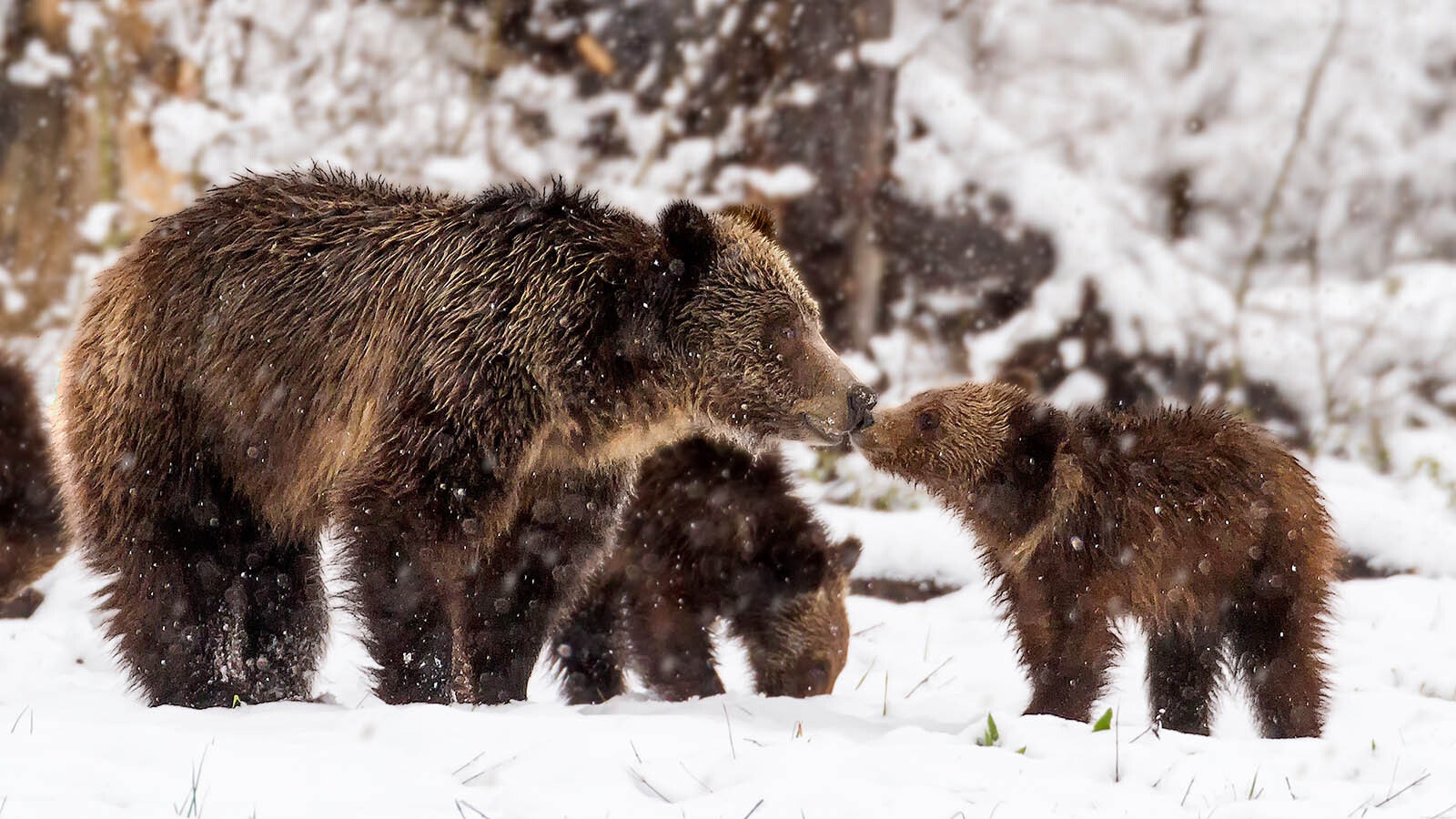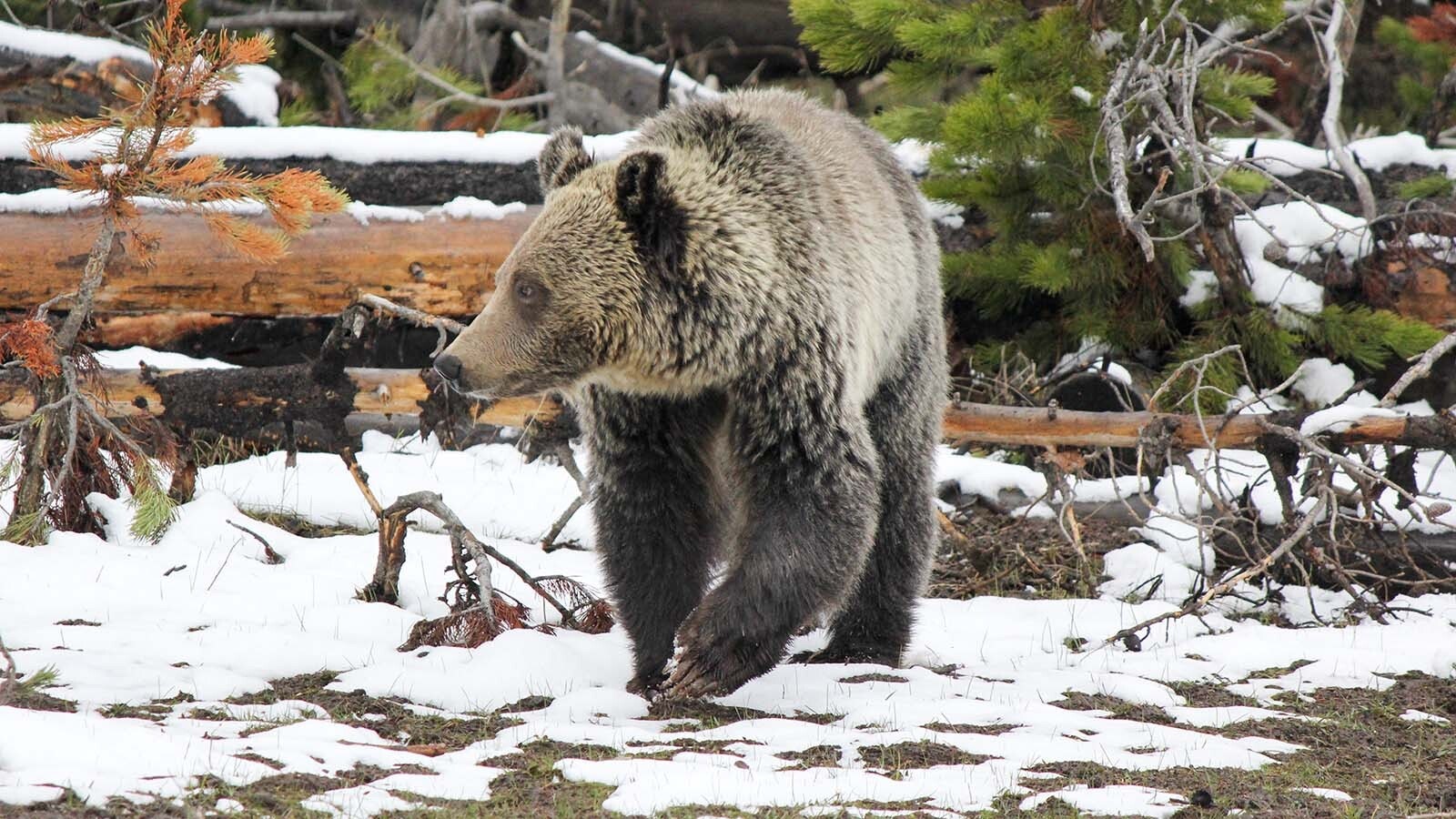Grizzly bears in Wyoming and the rest of the Lower 48 will remain under endangered species protection, federal officials announced — a decision immediately blasted by Wyoming Gov. Mark Gordon.
In a statement released Wednesday just after the U.S. Fish and Wildlife Service (FWS) announced its intention to keep grizzlies listed, Gordon implied it was a political move in the last days of President Joe Biden’s administration.
“It has always been clear the Biden administration had no intention of delisting the Greater Yellowstone Ecosystem grizzly bear,” Gordon says in the statement. “This latest move to keep a fully-recovered population on the Endangered Species List and eliminate the DPS (distinct population segment) confirms this decision is driven by politics and not biology.”
Others on both sides of the delisting debate also voiced strong reactions to Cowboy State Daily on Wednesday.
Prominent Wyoming outdoorsman Guy Eastman said keeping grizzlies listed won’t actually help the bears.
As their numbers grow, the bears keep pushing into areas where conflict with humans is inevitable, he said.
“Poor bears, they’re so overpopulated. All they’re trying to do is find new habitat,” Eastman said. “News flash bears: there isn’t any. You’re overpopulated in every square inch of suitable grizzly habitat.”
Andrea Zaccardi, spokeswoman for the Bozeman, Montana-based Center for Biological Diversity, took the decision to keep grizzlies listed as good news.
“We’re relived that Fish and Wildlife Service finally followed the science and determined that grizzly bears still need federal protection,” she said.
The FWS decision might allow for grizzly hunting in the future, she added, but her organization will continue to oppose that.
Redefining Populations
Gordon had petitioned FWS to delist grizzlies, and a federal judge recently gave the agency until Jan. 20 to render its decision.
Similar petitions to delist grizzlies were also filed by Montana and Idaho.
The FWS not only rejected those petitions, but has decided to redefine its approach to grizzly populations in the Lower 48.
The two largest distinct grizzly populations in the Lower 48 are estimated to each have roughly 1,000 bears.
Those populations include the Greater Yellowstone grizzlies, mostly in Wyoming. There are also Montana’s Northern Continental Divide grizzlies.
FWS has proposed classifying all grizzlies in the Lower 48 as a single population.
“The service’s proposed rule would revise that listing to establish a single distinct population segment (DPS) encompassing areas in Idaho, Montana, Washington and Wyoming, where suitable habitat exists and where grizzly bears currently reside or are expected to establish as populations recover,” according to FWS.
“Grizzly bear populations are now geographically closer to each other than ever, and the service has documented grizzly bear movement between some populations, indicating recovery zones are no longer discrete,” the agency states.
Grizzly conservation activists have argued that interconnected populations are key to the bears fully recovering in the Lower 48.
FWS has also proposed more flexible management of bears, such as giving ranchers more leeway to kill grizzlies that are attacking their cattle.
Delisting grizzlies remains a long-term goal, according to FWS.

Game And Fish Does Heavy Lifting
Zaccardi said her organization remains unsure about some aspects of the FWS’s decision.
“It adds more flexibility in terms of when grizzlies can be killed,” she said.
Eastman said he wasn’t surprised to hear that grizzlies will remain listed, but the news was still disappointing.
The Wyoming Game and Fish Department should have jurisdiction over grizzlies, since it’s already expending considerable money and manpower to manage grizzlies, he said.
That includes Game and Fish having to kill grizzlies that get into conflicts with people instead of having a hunting season for the bears, Eastman said.
“The state of Wyoming will just continue to pay a bundle of money to kill more grizzlies than the hunters were going to anyway,” he said.
Noted outdoor writer Jim Zumbo lives in the rural community of Wapiti between Cody and Yellowstone National Park.
He and other residents there have gotten used to having grizzlies in their backyards, and the Wapiti school is surrounded by a bear-proof fence.
Zumbo agreed that Game and Fish should manage grizzlies, because the agency is best-suited to handle problems such as bears gorging on roadkill along the highway near his house.
“I think, personally, that it’s a big mistake to have the FWS have jurisdiction over the bears when Wyoming Game and Fish is doing all the work,” he said. “It just doesn’t make sense to have both agencies involved.”
Gordon Hangs Hopes On Trump’s Return
Gordon stated that said he hopes the return of Donald Trump to the White House will revive efforts to delist grizzlies and hand management over to Game and Fish.
“Our state wildlife managers are foremost experts on this bruin,” Gordon said. “They should be at the helm of decision making that impacts the daily lives of people in Wyoming who live and work in grizzly bear country. The authority to fully manage wildlife is within the state’s purview.
“I look forward to working with the Trump Administration, Interior Secretary nominee Doug Burgum and Congressional leaders on delisting the GYE grizzly as well as on reforming the broken Endangered Species Act, which has lost its focus on species recovery and returning wildlife to state management.”
Mark Heinz can be reached at mark@cowboystatedaily.com.





